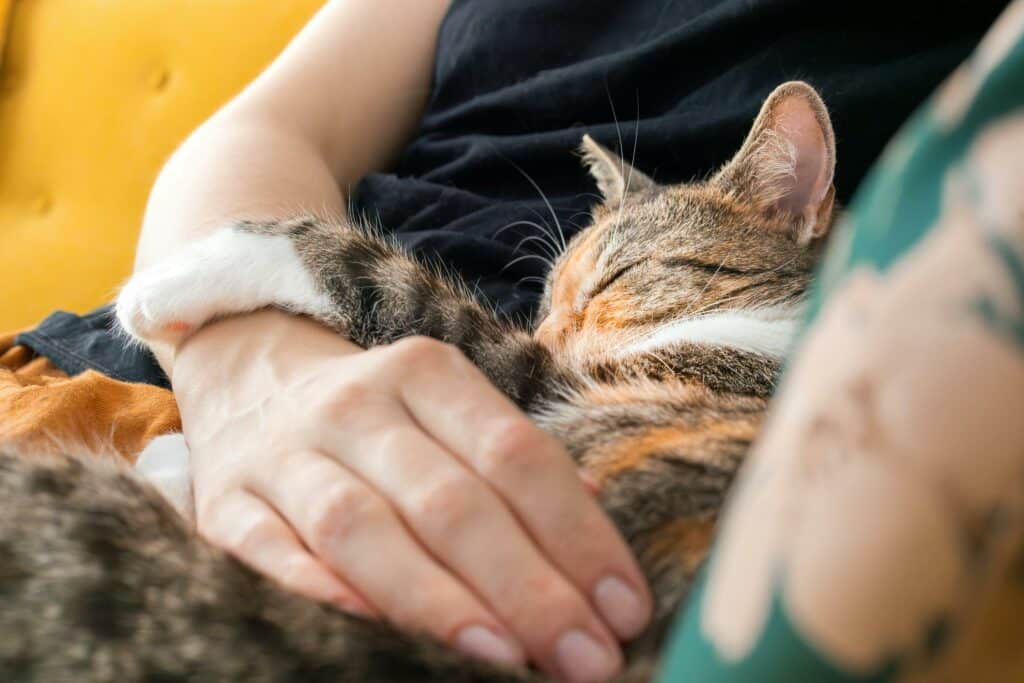
Cats are fascinating creatures, known for their enigmatic personalities and unique daily habits. But have you ever wondered what goes on in a typical day in the life of a cat? Whether your feline friend is lounging on the couch or prowling in the yard, their daily activities reveal much about their instincts, preferences, and needs. In this blog, we’ll explore a cat’s daily routine, providing insights into their behavior and how we can better understand and care for them.
Morning Rituals: Stretch, Groom, and Eat
Cats are creatures of habit, and their mornings often start with a luxurious stretch. Stretching not only helps them wake up but also prepares their muscles for the day ahead. This instinctive behavior is a remnant of their wild ancestors, who needed to stay limber for hunting.
After their stretch, cats typically groom themselves. Grooming is not just about cleanliness—it also helps regulate their body temperature and reduces stress. If you notice your cat spending significant time licking their fur in the morning, rest assured, it’s a sign of a healthy routine.
The next stop in their daily routine is breakfast. Cats are obligate carnivores, meaning they require a diet rich in animal protein. A high-quality meal first thing in the morning fuels their energy for their playful (or lazy) activities ahead. Observing your cat’s eating habits can also give clues about their health.
Mid-Morning Play: Channeling Hunter Instincts
As the day progresses, most cats enter a period of activity. For house cats, this usually involves playful behaviors like pouncing, chasing, or batting at toys. These actions mimic hunting behaviors in the wild, where cats would stalk and catch prey. Toys that simulate movement—such as feather wands or laser pointers—are particularly effective at engaging your cat’s instincts.
Encouraging this mid-morning play is essential for your cat’s physical and mental well-being. It prevents obesity and reduces boredom, which can lead to destructive behaviors.
Afternoon Naps: The Art of Relaxation
If cats are anything, they are masters of relaxation. By afternoon, your furry friend is likely to retreat to their favorite spot for a well-deserved nap. Cats sleep an average of 12-16 hours a day, a habit that stems from their need to conserve energy for hunting. Even though house cats are well-fed, this instinct remains deeply ingrained.
Providing a cozy and quiet place for your cat to nap can enhance their comfort and sense of security. Whether it’s a sun-drenched windowsill or a plush cat bed, creating a comfortable space is key to keeping your cat content.
Evening Adventures: Exploring and Socializing
As twilight approaches, cats become more active again. This is when their crepuscular nature (being most active during dawn and dusk) comes into play. Outdoor cats may take this time to roam the neighborhood, while indoor cats might climb, scratch, or engage in interactive play.
Social cats often use this time to interact with their human companions. If your cat rubs against your leg or meows persistently, they might be seeking attention or playtime. Use this opportunity to bond with your feline friend through petting, brushing, or playing.
Nighttime Routine: Hunting, Eating, and Sleeping
Nighttime brings another burst of energy for many cats, as they instinctively prepare to “hunt.” Even if your cat doesn’t venture outdoors, their nocturnal behavior might include pouncing on shadows, chasing bugs, or engaging with nighttime toys.
Before settling in for the night, most cats enjoy a small meal. This mimics their natural hunting-eating-sleeping cycle. Providing a light dinner can help prevent your cat from waking you up for food in the early hours.
Once their activities are complete, cats wind down and find a cozy spot to sleep. Observing your cat’s chosen sleeping position can reveal how safe and comfortable they feel in their environment.
Understanding the Variations in Routines
While many cats share similar daily patterns, individual routines can vary based on age, breed, and personality. For example:
- Kittens: Younger cats are more active and playful, requiring frequent meals and shorter naps.
- Senior Cats: Older cats may sleep more and play less, but they still need mental and physical stimulation.
- Outdoor Cats: Cats with outdoor access may have more unpredictable schedules, influenced by weather, territory exploration, and encounters with other animals.
Understanding your cat’s unique preferences allows you to tailor their environment and care to suit their needs.
How to Support Your Cat’s Daily Routine
Ensuring your cat’s routine supports their health and happiness involves a combination of proper nutrition, playtime, and comfort. Here are some tips:
- Balanced Diet: Feed your cat high-quality food that meets their nutritional requirements. Establish a consistent feeding schedule to align with their natural rhythms.
- Stimulating Environment: Provide toys, scratching posts, and climbing structures to keep them mentally and physically active.
- Health Monitoring: Regularly observe your cat’s behavior and physical condition. Changes in their routine can signal potential health issues.
- Bonding Time: Dedicate time each day to interact with your cat, building trust and strengthening your bond.
Conclusion: The Secret Life of Cats
A cat’s daily routine may seem simple, but every action they take is deeply rooted in their instincts and needs. From their morning stretch to their evening adventures, understanding these behaviors allows us to create a harmonious and enriching environment for our feline companions. By respecting and supporting their natural habits, we ensure they lead healthy, happy lives.

Jun Hao is a passionate advocate for pet adoption, care, and volunteering. With a heart dedicated to giving animals another chance, Jun Hao spends his days promoting the joys of rescuing and rehoming pets.
“Every pet deserves love and care, and I’m here to support their journey.”
Share this:
- Click to share on WhatsApp (Opens in new window) WhatsApp
- Click to share on Facebook (Opens in new window) Facebook
- Click to share on LinkedIn (Opens in new window) LinkedIn
- Click to share on Pinterest (Opens in new window) Pinterest
- Click to share on Tumblr (Opens in new window) Tumblr
- Click to share on X (Opens in new window) X
- Click to share on Reddit (Opens in new window) Reddit
- Click to share on Telegram (Opens in new window) Telegram
- Click to email a link to a friend (Opens in new window) Email
- Click to print (Opens in new window) Print































